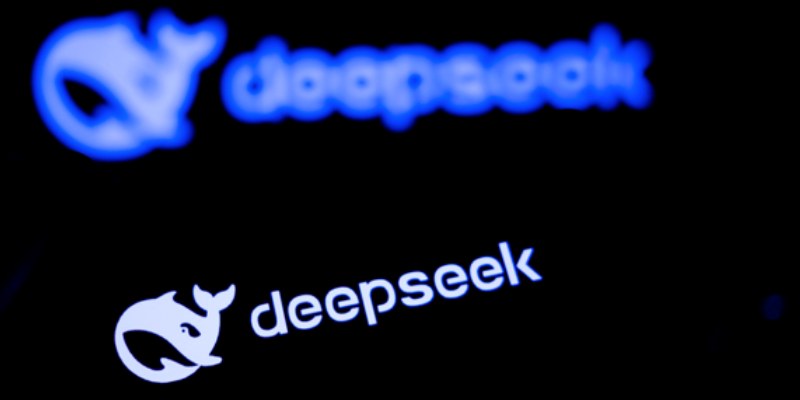Advertisement
Generative AI is transforming industries, including banking, but integration brings significant challenges. As a leader in financial innovation, JPMorgan Chase is exploring the technology but remains cautious. The company acknowledges security, ethical use, and regulatory compliance concerns—issues that raise red flags across the financial sector. Because sensitive financial data is involved, AI mistakes can be costly.
Questions about transparency, accountability, and bias are also prevalent. Unlike in other industries, generative AI in banking introduces more complex challenges. To mitigate these risks, JPMorgan Chase emphasizes careful implementation, prioritizing safety, control, and regulatory alignment. This measured approach reflects the bank's broader concerns about AI, emphasizing the need for precision, oversight, and deep expertise in deployment.

Sensitive data lies at the core of banking operations, making robust protection essential. Generative AI systems typically require large datasets for training, which raises serious concerns about consumer privacy. Feeding customer data into these systems—especially when handled externally—intensifies the risk of exposure and misuse. JPMorgan Chase remains cautious about sharing personal data with third-party AI models. To mitigate this risk, the bank is tightening internal controls to prevent any potential data leaks.
One major challenge in banking is the development of secure, in-house generative AI models that align with security requirements and compliance standards. These models have to satisfy internal processes as well as security criteria. With open-source technologies or outside APIs, risks of artificial intelligence in banking rise. Key are solid audit trails, access restrictions, and encryption. Among JPMorgan Chase's AI issues are accidental data leakage and misuse. Maintaining user data from leaks or illegal usage continues to be the first concern. Using artificial intelligence calls for internal security rules to change. Artificial intelligence has to honor data integrity everywhere.

Financial institutions operate under strict regulatory frameworks, and the introduction of generative AI only adds to this complexity. JPMorgan Chase has to match artificial intelligence use with industry standards and financial legislation. In banking, legal compliance cannot be negotiated. Many of the regulations were not intended with artificial intelligence in mind. Cross-border data flow rules are another area of JPMorgan Chase AI worries. Global operations call for rigorous data management in many areas.
Unauthorized outputs or hallucinated content could cause violations. AI systems do not have to provide false or non-compliant knowledge. Manual checks and approval procedures are needed, and human supervision lessens liability concerns. In banking, artificial intelligence poses hazards that include algorithm bias, biased results, and violations of compliance—accountability demands that explainable artificial intelligence models be developed.
In banking, trust is essential; ethics are, therefore, quite important. Generative artificial intelligence could create unsuitable or biased material, which could sour a company's reputation. Ethical frameworks for general models are still developing. One of the main issues is guaranteeing responsible artificial intelligence output. Financial services have to avoid supporting inequality or discrimination.
Managing public opinion is one of the generative AI banking difficulties. Errors can easily become viral and sour confidence. JPMorgan Chase emphasizes responsible messaging and brand integrity. AI systems have to line up with ethical banking standards. Internal policies and AI ethics board direct use. Crucially important are ethical reviews, content moderation, and bias testing. In finance, artificial intelligence poses more questions than only numerical ones.
Including generative artificial intelligence in financial activities is not easy. Many times, legacy systems complicate seamless integration. JPMorgan Chase has to match new AI technologies with existing systems. One of the main generative AI banking issues is system compatibility. Managing several technologies adds to operational challenges. The bank has to make sure artificial intelligence fits present procedures. Operational hazards cover mistakes, failures, and poor communication. Employees also need instruction so they may properly apply artificial intelligence tools.
Process disturbance and workforce preparedness are two issues of JPMorgan Chase AI. Not every team has advanced tools at hand. Redesigning workflows could maximize artificial intelligence integration. Maintaining system stability is crucial. Small AI errors might also lead to major issues. Artificial intelligence risks in finance grow when processes lack cohesiveness. There is a need for appropriate support systems and change management. Human and technical harmony has to be flawless. The best is a staggered rollout under constant supervision. Success results from a well-run implementation plan.
Many times, it is sophisticated and challenging to understand AI models. In particular, generative models are infamous for their lack of openness. Every action in banking has to be easily traceable. JPMorgan Chase has problems with artificial intelligence explainability. Regulators and stakeholders are required to have a clear understanding of AI outcomes. One of the problems with generative artificial intelligence banking is the models' black-box character. Transparency makes trust challenging. JPMorgan Chase AI issues center on knowledge and ownership of created stuff.
AI outputs have great risks that cannot be explained. In finance, decisions have to be supported by reason. Executives and auditors have to check AI-generated insights. More dependable and safer are explainable models. In finance, artificial intelligence's risks rise when judgments lack clarity. JPMorgan Chase funds technologies meant to simplify artificial intelligence. Open AI fosters compliance and confidence. Interpretability must be given top priority in any AI initiative by companies.
Generative artificial intelligence marks a fundamental change in banking culture. Workers can object to strange tools or worry about job losses. JPMorgan Chase has to control this with pushback. Long-term success requires building acceptance. Two issues facing generative artificial intelligence banking are changing company culture and perspective. Large companies need change management. Concerns about JPMorgan Chase AI indicate personnel involvement as much as strategy.
Strategic planning lets artificial intelligence complement corporate objectives. Risks associated with artificial intelligence in finance also center on mismatched expectations. Overhyped tools might be let down without appropriate direction. Objectives and reasonable deadlines help increase acceptance. A strong, innovative culture supports the success of artificial intelligence. From the top down, JPMorgan Chase supports sensible artificial intelligence use. Good leadership guarantees that teams welcome change.
While generative AI holds significant promise, it presents major challenges for the banking sector. JPMorgan Chase has adopted a cautious approach, focusing on legal compliance, data security, and organizational culture. Each step forward considers the operational implications of adopting generative AI in a highly regulated environment. From safeguarding sensitive information to ensuring transparency, AI introduces a broad spectrum of risks that must be carefully managed in the financial industry. JPMorgan Chase AI issues highlight the need for accountability in technology acceptance. JPMorgan Chase's strategy balances caution with innovation, reflecting the complex realities of deploying generative AI in finance.
Advertisement

How to use Python’s Tabulate Library to format your data into clean, readable tables. This guide covers syntax, format styles, use cases, and practical tips for better output

A fake ChatGPT Chrome extension has been caught stealing Facebook logins, targeting ad accounts and spreading fast through unsuspecting users. Learn how the scam worked and how to protect yourself from Facebook login theft

Learn the different types of attention mechanisms used in AI models like transformers. Understand how self-attention and other methods help machines process language more efficiently

Intel and Nvidia’s latest SoCs boost AI workstation performance with faster processing, energy efficiency, and improved support

LG introduces its Smart Home AI Agent, a mobile assistant designed to streamline household management by learning your routines, automating tasks, and syncing with smart devices

Master the Python list index to access, update, and manage list elements efficiently. This guide covers simple ways to work with indexes for better control over your lists

Learn how business leaders can measure generative AI ROI to ensure smart investments and real business growth.

Explore FastRTC Python, a lightweight yet powerful library that simplifies real-time communication with Python for audio, video, and data transmission in peer-to-peer apps

Use ChatGPT from the Ubuntu terminal with ShellGPT for seamless AI interaction in your command-line workflow. Learn how to install, configure, and use it effectively

Discover the top AI search engines redefining how we find real-time answers in 2025. These tools offer smarter, faster, and more intuitive search experiences for every kind of user

DeepSeek's data practices spark global scrutiny, highlighting the tension between AI innovation, privacy laws, and public trust

How to encourage ChatGPT safety for kids with 5 practical strategies that support learning, creativity, and digital responsibility at home and in classrooms